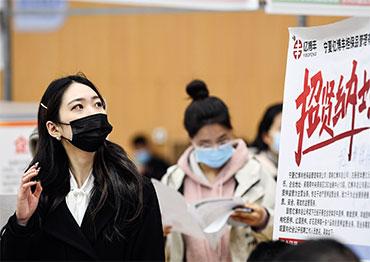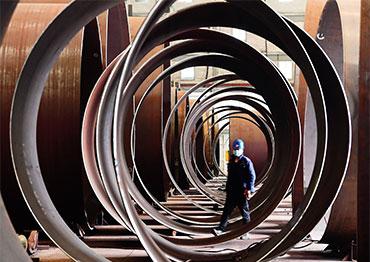According to Liu Shijin, vice president of the Committee for Economic Affairs of the Chinese People’s Political Consultative Conference (CPPCC), employment figures will replace GDP growth rate as the top priority of China’s central leadership. In the work report, China said it aims to generate at least 11 million jobs in 2021 and maintain the official surveyed unemployment rate in urban regions at no more than 5.5 percent.
Despite the impact of the global pandemic, China created 11.9 million jobs in urban regions in 2020, while the official surveyed urban unemployment rate was steady at 5.2 percent at the end of 2020. But as the pandemic continues, China, like most countries around the globe, is facing the threat of widespread unemployment.
According to the Purchasing Manager’s Index (PMI) employment data released by the National Bureau of Statistics, China’s employment index has been below the 50 neutral mark since April 2020. Despite the economic recovery, the employment index dipped from 49.6 in December 2020 to 48.1 in February.
In Q4 2020, there were 169.6 million employed migrant workers, 2.7 percent (4.66 million) less than the same period the previous year. At the same time, wages for migrant workers increased by only 2.8 percent from last year, considerably lower than the 6 percent increase in 2019.
Zhong Wei, professor and director of the Research Centre for International Finance at Beijing Normal University, told NewsChina that employment in China can be measured by starting salaries and services consumption. Zhong said that while starting salaries have not changed in the last two years, service consumption such as dining and entertainment has declined, indicating a deteriorating job market.
According to Jia Kang, chief economist at the China Academy of New Supply-side Economics, the key to boosting the job market is supporting small businesses. The private sector generates an estimated 90 percent of employment, 80 percent of which is generated by micro, small and medium-sized businesses.
To boost employment, the government report included a new tax cut package for small businesses. For example, the value-added tax threshold will be raised to 150,000 yuan (US$22,800) from 100,000 yuan (US$15,200). Small and micro-businesses with annual taxable earnings under 1 million yuan (US$152,611) will be eligible for a 50-percent income tax reduction.
In a government meeting on March 31, Chinese Premier Li Keqiang announced the measures would go into effect on April 1 and would result in tax reductions of about 550 billion yuan (US$83.7b) in 2021.
But according to Guo Wei, deputy director of the State Council Research Office, the unemployment situation could worsen in 2021 as 15 million people are expected to enter the job market. The number of new college graduates alone will amount to about nine million.
“Generating 11 million jobs, which would restore the job market to pre-pandemic levels, is a real challenge as there are still a lot of uncertainties,” Guo said.

 Old Version
Old Version

